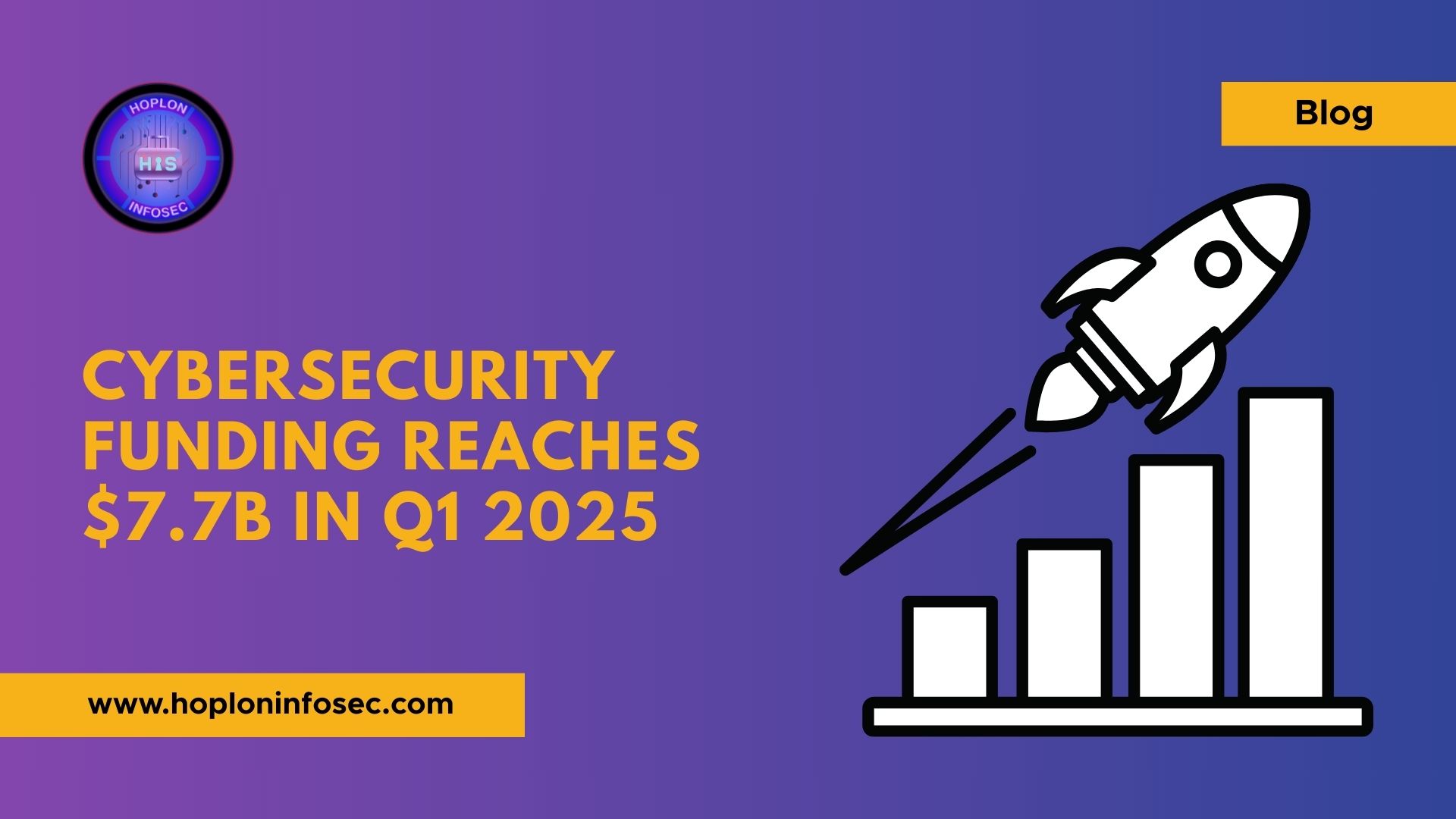The cybersecurity sector has recently emerged from a two-year Cybersecurity Funding dip to reclaim its spotlight on the global stage. Venture capital (VC) firms have demonstrated renewed confidence by infusing $7.7 billion into cybersecurity startups and companies in the first quarter of this year. This milestone represents the strongest quarter in three years. This resurgence reflects the mounting urgency to counter evolving cyber threats and signals a fresh wave of innovation and growth within the industry.
Cybersecurity has become more than just an IT concern; it is now a fundamental pillar of modern business strategy and national security. As digital transformation accelerates, organizations worldwide must invest heavily in cutting-edge security solutions that safeguard critical infrastructures and sensitive data.
A Record-Breaking Cybersecurity Funding Start to the Year
Escalating Cyber Threats and Their Impact
Despite concerted efforts by companies and governments to implement robust defences, global cybercrime reached a staggering $9.2 trillion last year. The figures are even more alarming when projections suggest that cybercrime costs could soar by 70% to reach an estimated $15.6 trillion by 2030. This exponential cyberattack growth is driven by increasingly sophisticated tactics and the widening scope of targets—from individual consumers to major corporations and government agencies.
The alarming rise in cyber threats has ignited a robust demand for advanced cybersecurity solutions. Companies that can offer innovative, scalable, and adequate security measures are in a prime position to capture significant market share. As a result, the sector has witnessed a notable surge in VC investments, marking a pivot from relative stagnation to aggressive growth and strategic backing.
Q1 Investment Milestones
According to recent data from Crunchbase, cybersecurity companies raised an impressive $7.7 billion in Q1 of this year, setting a new benchmark for quarterly funding. This figure, the highest for the first quarter in the cybersecurity market’s history, builds upon the momentum established in previous years. For context, Q4 2021 saw VC investors commit $7.9 billion to the sector, and Q1 of 2024 recorded a considerably lower figure of $3.2 billion.
This dramatic increase in Q1 Cybersecurity Funding underscores renewed confidence among investors. It also highlights a broader trend: despite a reduced number of funding rounds, the capital being deployed is significantly more significant on a per-deal basis. In Q1 2025, the number of funding rounds decreased to 49 compared to 59 in the previous year. This indicates that investors are now placing larger bets on established projects and mature companies rather than dispersing funds across numerous smaller ventures.
The Economic Landscape of Cybersecurity Investment

The Cumulative Cybersecurity Funding Boom
The robust injection of $7.7 billion in Q1 has propelled the cumulative funding in the cybersecurity sector to over $141 billion. This milestone is particularly impressive given that 2025 is shaping to be one of the strongest years for cybersecurity funding—second only to record-breaking years such as 2021. The surge in investments reflects the sector’s intrinsic value and its critical importance in a world where cyber threats are both pervasive and rapidly evolving.
Regional Distribution of Investments
When examining the geographical spread of investments, the United States stands out as the dominant player. More than 70% of the total funding—approximately $100 billion—has been allocated to American companies, with California emerging as the leading hub for cybersecurity innovation. This concentration is partly due to the region’s mature ecosystem of tech startups, established VC firms, and a culture of technological experimentation and risk-taking.
In contrast, European cybersecurity companies have collectively raised around $22.8 billion, roughly one-quarter of the total funding. Meanwhile, Asian companies have secured approximately $14.2 billion. Although these regions lag behind the United States in terms of total financing, they are rapidly advancing, driven by governmental initiatives and private sector partnerships to bolster their cybersecurity infrastructure.
The Changing Investment Landscape

Fewer Deals, Larger Investments
One notable trend in the current Cybersecurity Funding environment is the shift towards more significant investments in fewer deals. While the total capital raised is at an all-time high, funding rounds have declined. In Q1 2025, cybersecurity companies closed 49 rounds of funding, compared to 59 rounds during the same period last year. This trend indicates that investors are becoming more selective, backing projects with proven track records and precise growth trajectories.
The rationale behind this strategy is straightforward: by concentrating funds on fewer high-potential ventures, investors can better manage risks and achieve more significant returns. This selective approach will likely encourage cybersecurity companies to focus on developing scalable and robust solutions to address complex and evolving threats.
Strategic Focus on Established Projects
Investors are increasingly drawn to cybersecurity projects that have already demonstrated a viable business model and a significant market presence. By favouring larger, established companies, VC firms can mitigate some of the risks associated with early-stage ventures. This trend is beneficial not only for investors but also for the cybersecurity sector at large, as it fosters a culture of stability and long-term strategic planning.
As Cybersecurity Funding becomes more concentrated, the competitive landscape will likely see a consolidation of market leaders. Companies combining innovative technology with strong business fundamentals are poised to dominate the sector. This trend also encourages the development of more specialized and industry-specific security solutions, further enhancing the overall resilience of digital infrastructures worldwide.
The Global Imperative for Cybersecurity Innovation
Rising Cyber Threats as a Catalyst for Innovation
The sheer scale of cybercrime costs—already astronomical at $9.2 trillion and projected to escalate further—catalyzes innovation within the cybersecurity industry. The economic impact of cyberattacks goes far beyond immediate financial losses; it also includes long-term damage to brand reputation, loss of consumer trust, and significant operational disruptions.
In response, cybersecurity companies are not merely reacting to threats but actively developing advanced technologies designed to counteract cyber risks preemptively. These innovations span artificial intelligence (AI)- driven threat detection, behavioural analytics, blockchain-based security protocols, and more. By leveraging these cutting-edge technologies, cybersecurity firms can offer adaptive and resilient solutions, providing a critical line of defence against sophisticated cyber adversaries.
The Role of Government and Regulatory Bodies
Governments worldwide have recognized the critical importance of cybersecurity in maintaining national security and economic stability. As a result, many governments are introducing stricter regulations and investing in national cybersecurity infrastructure. Public-private partnerships are emerging as a key strategy to address the growing threat landscape, where the combined expertise of both sectors can lead to more robust security solutions.
Regulatory frameworks also play an essential role in shaping the cybersecurity industry. Compliance requirements and data protection laws push companies to adopt more rigorous security measures. While challenging for some businesses, this regulatory pressure ultimately drives innovation and leads to the development of more secure and reliable technologies.
Future Trends and Opportunities in Cybersecurity

Embracing the Digital Transformation
The digital transformation sweeping across industries—healthcare and finance to education and retail—has expanded the attack surface for cybercriminals. This rapid shift towards digital ecosystems means more data is being transmitted, stored, and processed online than ever before. Consequently, the demand for comprehensive cybersecurity solutions is set to increase dramatically.
Organizations are now investing in technologies that not only defend against current threats but are also capable of anticipating and mitigating future risks. This proactive approach is essential when cyber threats are increasingly complex and multifaceted. Companies that can harness the power of emerging technologies, such as machine learning and big data analytics, will be well-positioned to lead the next wave of cybersecurity innovation.
The Emergence of Specialized Security Solutions
As the cybersecurity market matures, there is a growing trend toward developing specialized security solutions. Instead of adopting a one-size-fits-all approach, companies are increasingly tailoring their offerings to address specific industry challenges. For example, healthcare organizations require solutions that protect patient data and comply with stringent regulatory standards, while financial institutions need robust measures to prevent fraud and secure transactions.
This specialization is driving innovation in niche areas of cybersecurity, including identity and access management, cloud security, and endpoint protection. By developing targeted solutions, cybersecurity firms can offer more effective protection that meets the unique needs of different sectors. This tailored approach enhances security outcomes and creates new opportunities for growth and market expansion.
Investment Strategies and Market Dynamics
The Importance of Scalable Business Models
For cybersecurity companies, scalability is a key factor that attracts investor interest. Investors are looking for businesses that can rapidly expand their operations and penetrate new markets without compromising the quality of their security solutions. Scalable business models allow companies to manage growing volumes of data effectively and user demands while maintaining high levels of security.
A scalable cybersecurity solution often involves leveraging cloud technologies, automation, and AI-driven analytics to ensure security measures keep pace with an organization’s growth. Companies that invest in building scalable infrastructures are more likely to secure more significant investments, as they present lower risk and offer more substantial potential for long-term profitability.
Navigating a Competitive Landscape
The cybersecurity market is characterized by fierce competition, with numerous startups and established players vying for a share. In this environment, differentiation is critical. Cybersecurity firms increasingly focus on innovation, customer service, and strategic partnerships to stand out.
Investors are paying close attention to companies with technological prowess and strong market positioning. Cybersecurity startups must build solid business models, secure strategic partnerships, and continuously evolve their product offerings to stay ahead of cybercriminals. Companies that can navigate these competitive pressures are likely to attract substantial funding and achieve lasting success in the market.
The Road Ahead: Challenges and Opportunities
Addressing the Skills Gap
One of the significant challenges facing the cybersecurity industry is the shortage of skilled professionals. As the demand for sophisticated security solutions grows, there is a parallel need for experts who can design, implement, and manage these systems. The skills gap in cybersecurity is a global issue that requires concerted efforts from educational institutions, industry leaders, and government bodies.
Investors and companies are beginning to recognize the importance of addressing this gap through targeted training programs, academic partnerships, and industry certifications. By investing in human capital, the cybersecurity sector can ensure that it has the expertise required to develop and maintain state-of-the-art security solutions.
Balancing Innovation with Regulation
While innovation drives rapid advancements in cybersecurity, companies must also navigate an increasingly complex regulatory landscape. Striking the right balance between technological innovation and regulatory compliance is a delicate challenge. Firms must ensure their products offer robust security and adhere to local and international standards.
This regulatory environment can sometimes slow innovation, as companies must allocate resources to compliance and certification processes. However, it also creates opportunities for firms offering innovative and compliant solutions. Cybersecurity companies can secure a competitive advantage and attract further investments by meeting regulatory requirements while pushing the boundaries of technology.
Conclusion: A Transformative Moment for Cybersecurity

The recent surge in VC funding and the overall reinvigoration of the cybersecurity sector mark a transformative moment in the industry. With $7.7 billion injected into the market in just the first quarter of this year, the momentum is unmistakable. This unprecedented level of investment, combined with a growing awareness of the escalating costs of cybercrime, is driving innovation at an extraordinary pace.
The shift towards fewer but larger funding rounds underscores investors’ confidence in established projects with scalable business models and robust growth potential. As the industry continues to evolve, the concentration of investments in mature companies and specialized security solutions will likely lead to a more resilient digital landscape.
From the United States, which remains the dominant hub of cybersecurity innovation, to emerging markets in Europe and Asia, the global landscape is witnessing a dynamic shift in how security is perceived and prioritized. This trend is a testament to the increasing threat of cybercrime and indicates the opportunities available for companies that can deliver effective, scalable, and innovative security solutions.
Looking ahead, the cybersecurity industry faces both significant challenges and promising opportunities. Addressing the global skills gap and balancing regulatory demands with innovative solutions will be crucial in sustaining this growth. The next wave of cybersecurity breakthroughs will likely emerge from companies that can adapt quickly to changing threat landscapes while maintaining a steadfast commitment to robust security measures.
Sources: Financial News, The Middle Market




